Objectives
The objectives of the case study of Tharu Cultural Museum are to know about the use of space, lighting system, circulation, access, display techniques, etc. are analyzed.
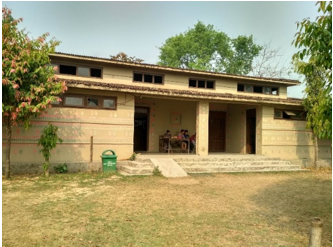
General Information
- Location: Bachhauli-6, Sauraha, Chitwan
- Established in July 2005
- Site context: Agricultural land
- Total Site area: 3009.39 sq. m.
- Activities: Permanent display about tharu culture, tharu traditional handicrafts training, cultural dances,
- Orientation: East Entrance
- Target people: External and internal tourist
- Facilities: exhibition hall, souvenir, and handicraft shop
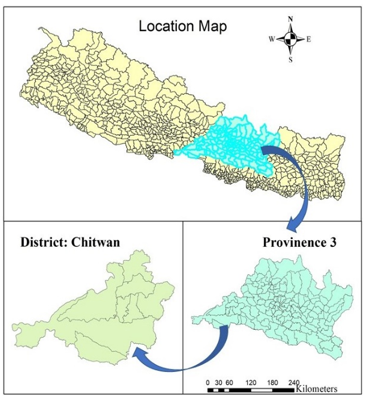
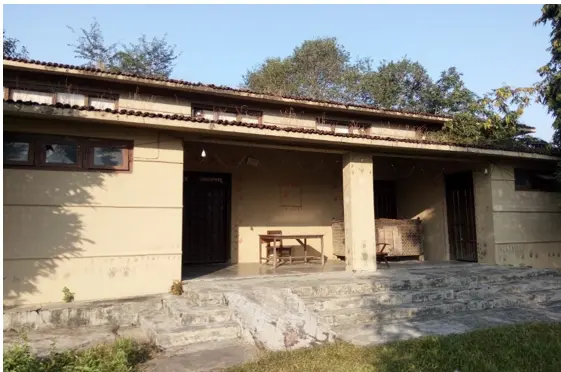
The Tharu Cultural Museum and Research Centre was established in July of 2005. It is situated in the heart of the Tharu community in Bachhauli village, Sauraha, Chitwan. It is a self-funded community-based museum. In the very beginning, it was funded by collecting funds from the local people and the museum’s visitors. However now “the museum’s funds come from its cultural shows, souvenir and handicraft shop, food festival, and museum fees” (Mahato & Mahato, 2010, 121). In addition to that the “funds were/[are] collected from the performance of cultural dances, particularly the Tharu stick dance, which is very popular in Nepal” (Mahato & Mahato, 2010, 123). The land, where the museum situated, is still on the lease with a little amount of money to pay back. According to the director of the museum, necessary woods and timbers were provided by the Chitwan National Park in association with the local forestry department at Sauraha during the construction process. The buildings were not only made with the community’s support in labors and available materials in the village, but also using the Tharu traditional archeological designs (Sonny Eli Zaluchu, 2021).
According to office, about 15,000 visitors annually visit the museum.
Accessibility and Approach
Tharu Cultural Museum is accessibility through the village of width about 15’ which helps visitors to introduce Tharu house forms. Visitors enjoy and see activity of Tharu people in the village.
Architectural Expression
The building is oriented towards east which is good oriented in Tharu style. Tharu architecture is expressed through expression of modern materials. Mud color in cement plaster is used to express traditional mud wall. The building has doubled stepped roof to take natural light through window. The wall is decorated with beautiful hand paintings. The building has slopped roof. The door is made of timber and beautifully crafted.


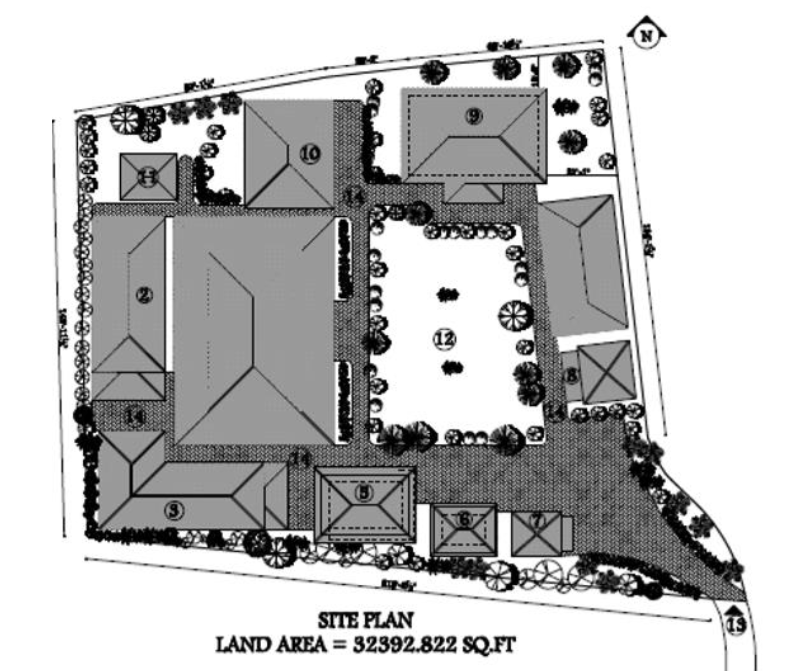
- Main building
- Training Hall block
- Store block
- Typical tharu home class “a”
- Typical tharu home class “b”
- Typical tharu home class “c”
- Ticket counter
- Shop
- Library
- Children & learning room
- Toilet
- Lawn/ garden
- 13. Entrance
- 14. Walkway
Main Building
The plan of main building of Tharu building is shown below. The space used in building is categorized in different Tharu functional units and display. The circulation is also rectangular and easy access to view. The different functions are displayed in different units of space, and it helps viewer to know easily about it without confusion. For example, there are different space of planning like as dance, marriage, agriculture, God, death, appliances, kitchen appliances, etc. are display in the wall side and some sculpture with different activity are shown in center part with better circulation of space.
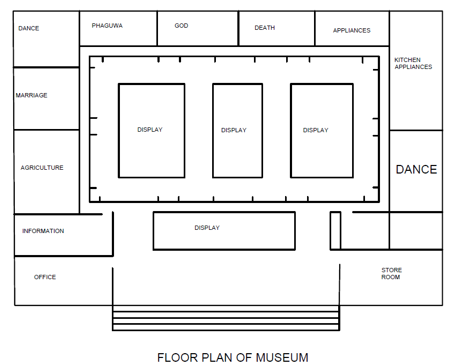
Museum Wall Painting
The Museums wall paintings demonstrating the general lifestyle, and the birth, wedding, and death ceremonies of the indigenous Tharu of Chitwan. The Paintings are historically and archeologically very significant. The paintings not only tell the life cycle, life style of indigenous life style of indigenous Tharu people but also how the life of Tharu people has changed over time.

The Tharu Cultural Museum and Research Centre at Bachhauli, the nearest Tharu village to Sauraha, has various old assets, photographs and paintings which are major attraction to visitors.


Tharu Sculptures
The Museum endeavors to demonstrate Tharu Culture via several sculptures. The museum has three sculptures:
- Tharu woman in traditional dress,
- A woman with grinding toll
- A man in Traditional Dress
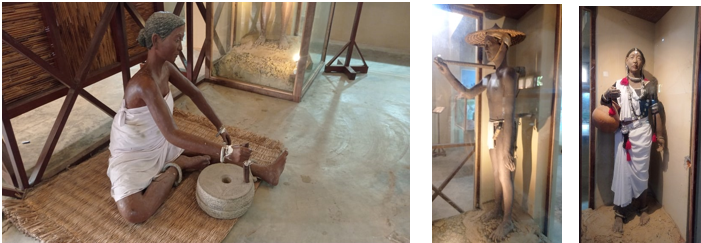
Tharu Traditional Cookwer's
The Museum endeavors to demonstrate Tharu traditional cookware’s that were used for daily cooking. There are different types of cooking utensils which Tharu people are used are shown.
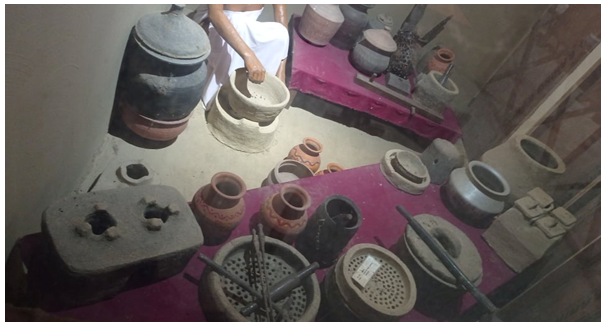
Lighting
- Natural lighting through ribbon windows but not proper and effective.
- Uncontrolled light system
- No provision of proper artificial light for displays
- Sufficient natural light in circulation areas
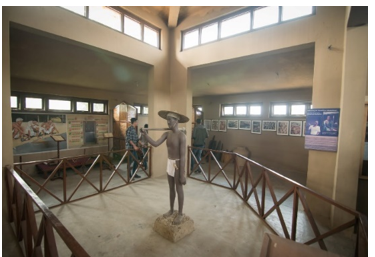
Display Techniques
- Exhibits are separated by movable panel
- Unique wooden cart is exhibited at the Centre
- The exhibits displayed in the tool are painted in the wall to show how Tharu people use it

Lack
- No service areas, cafeterias, and insufficient office spaces
- No proper lighting considerations for display
- No parking areas, approaching road is not wide enough
- No service entries
- No Tharu Architecture expression, use of modern materials